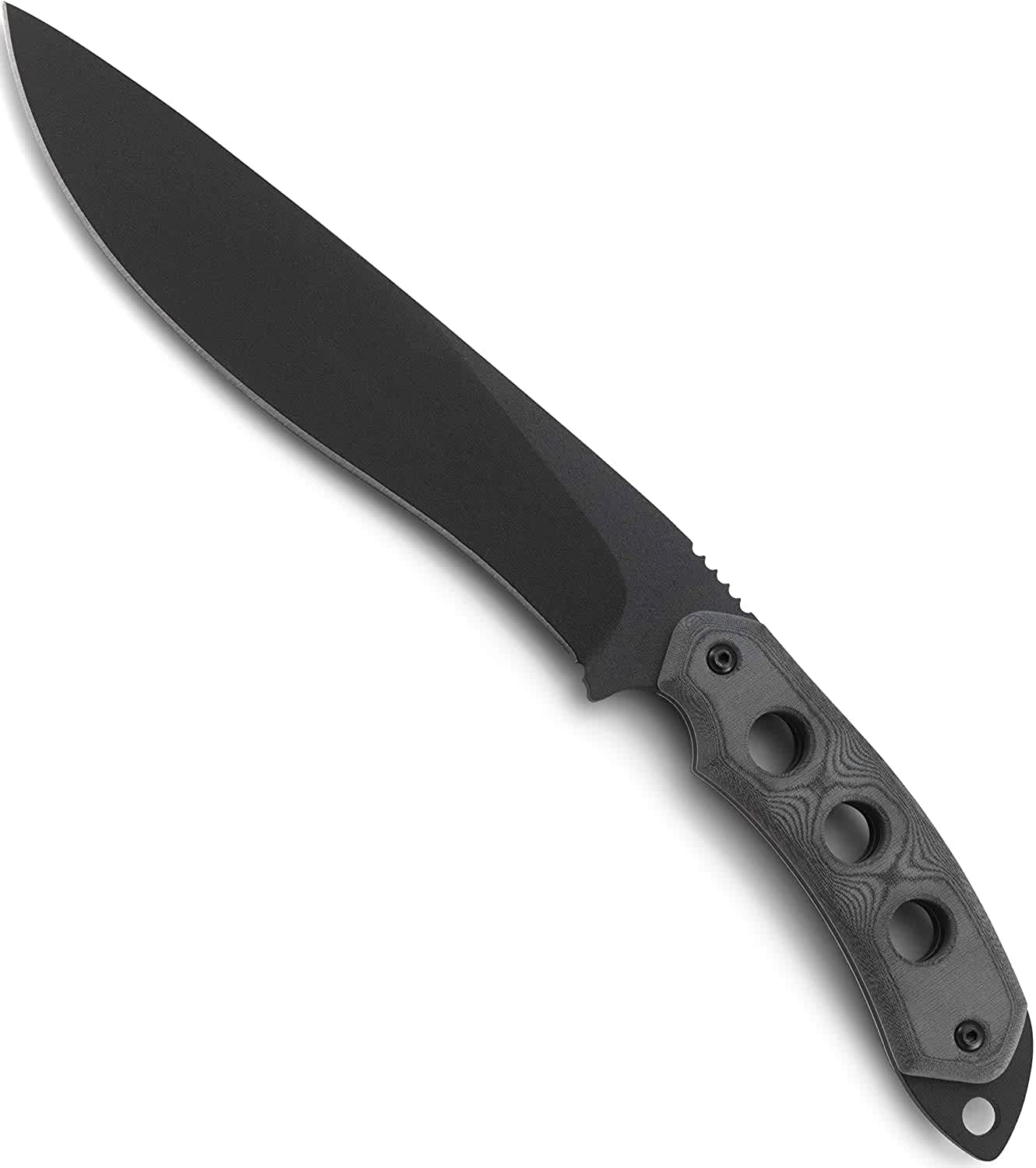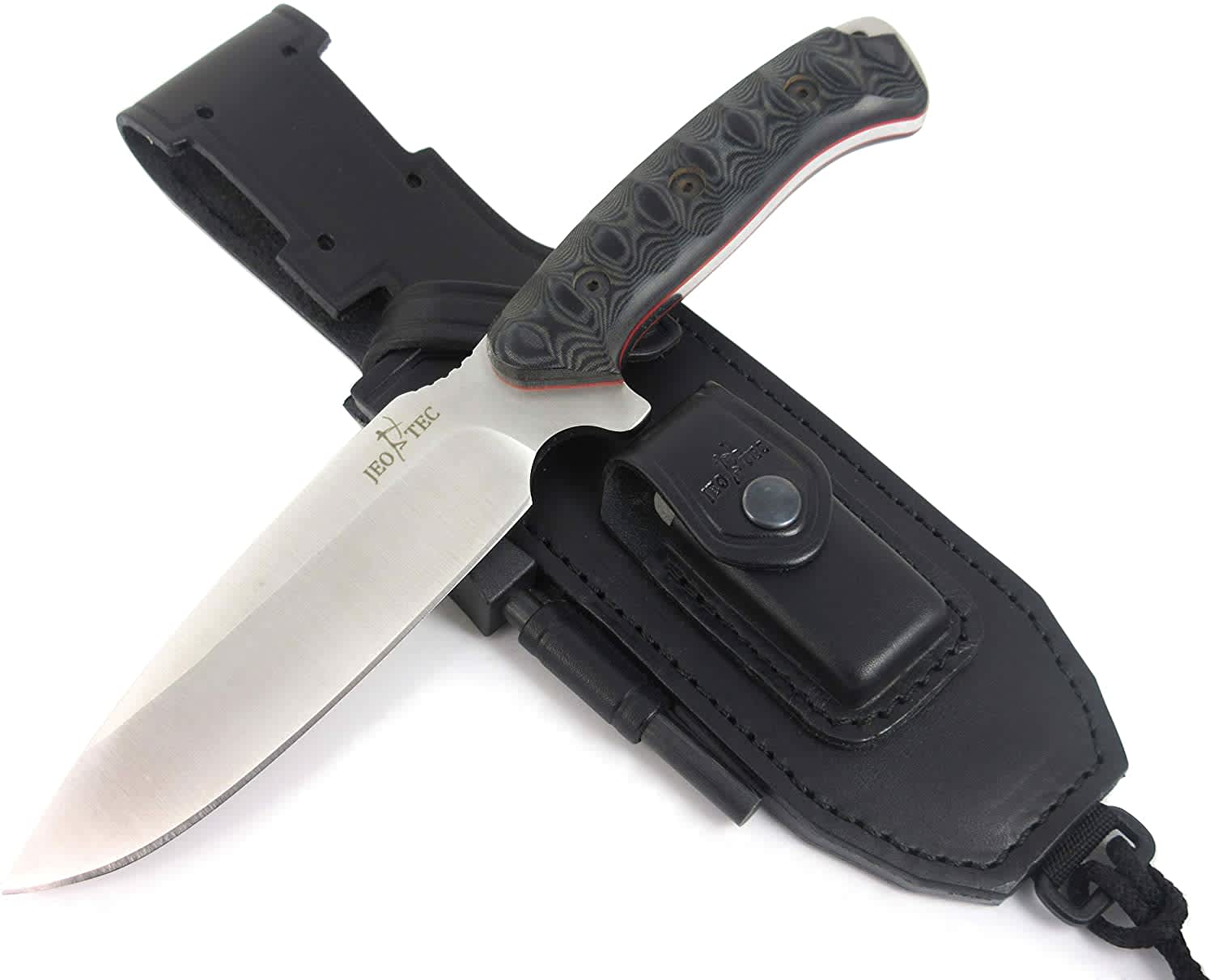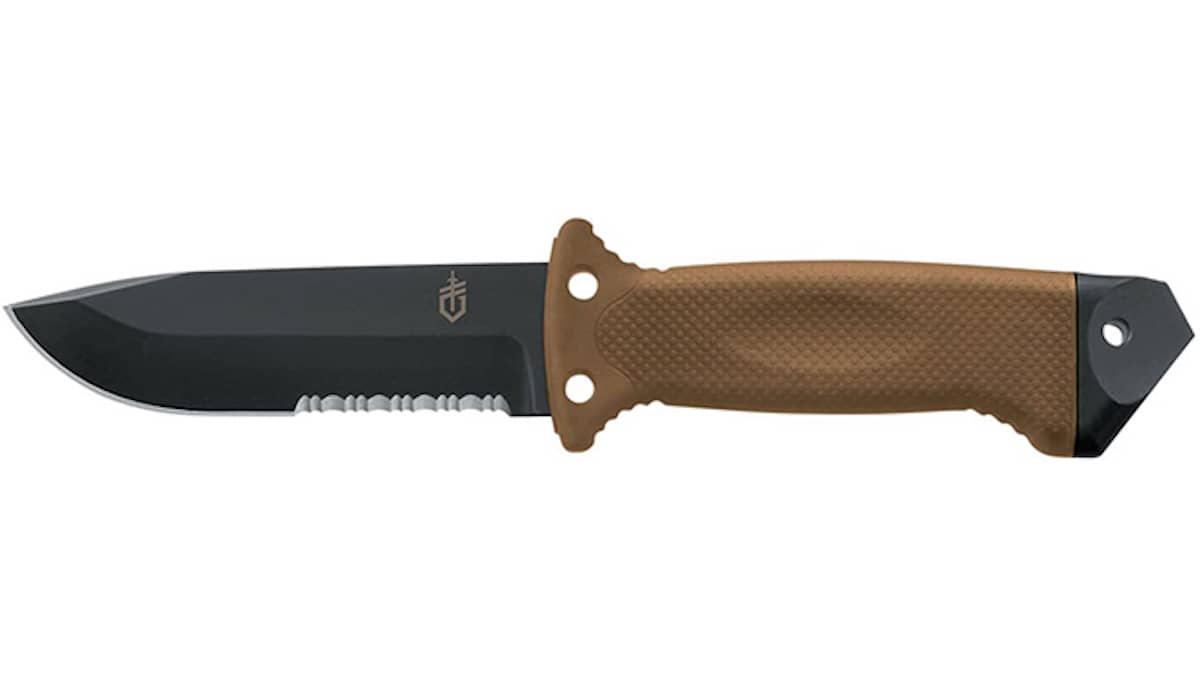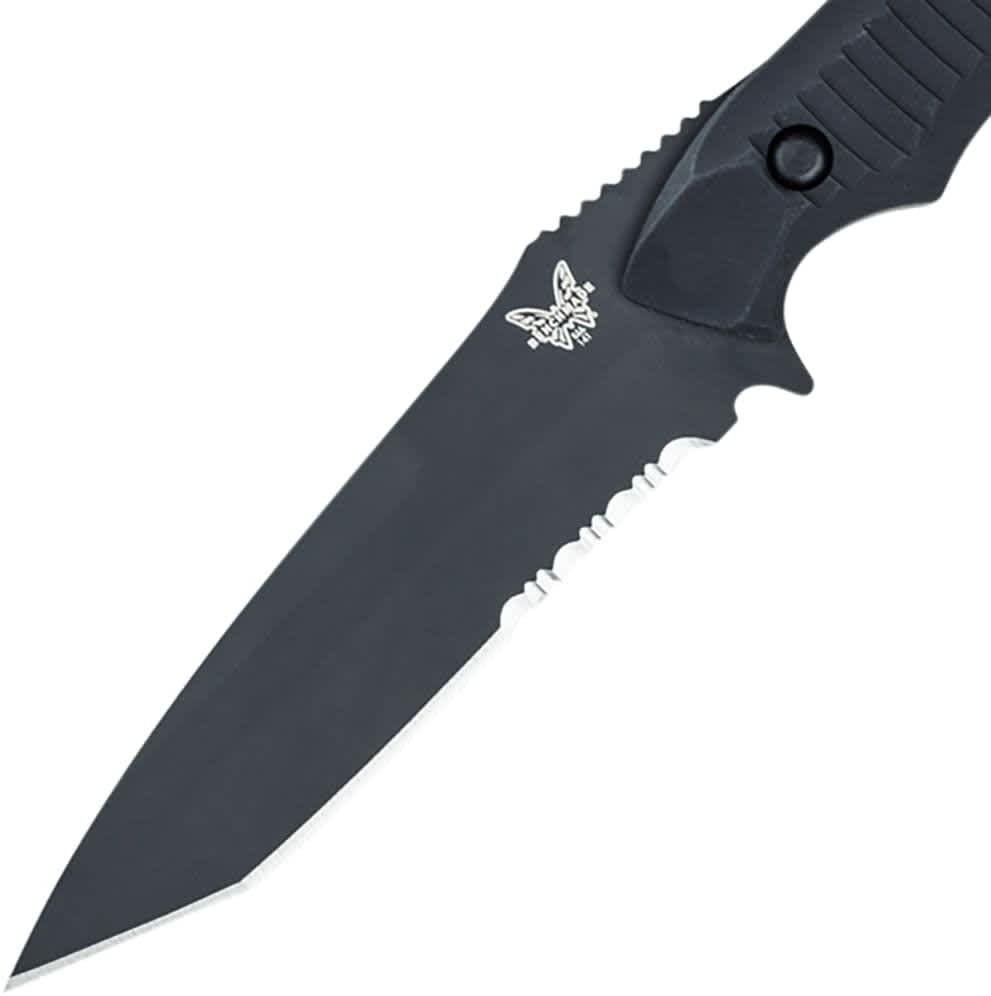A Survival Knife Can Make All the Difference
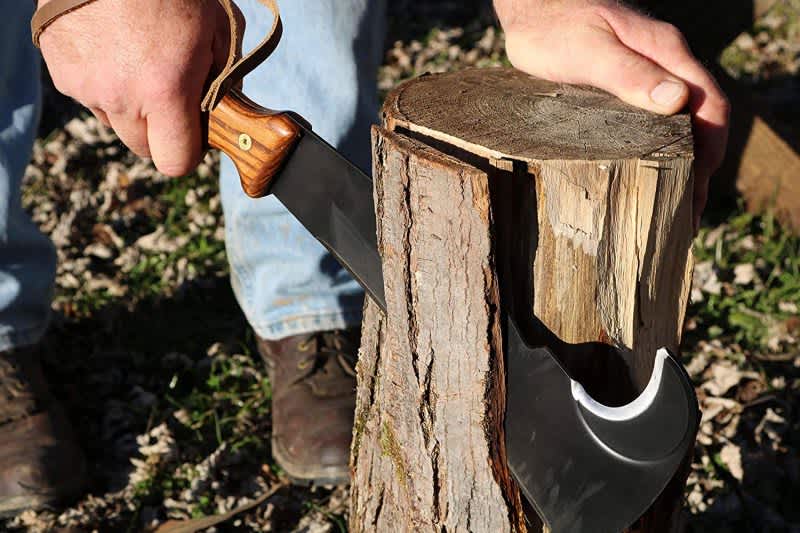
1. CRKT Karen Hood Chopper - Editor's Pick
The Chopper is part machete, part knife, part axe and more. Designed by renowned survivalist Karen Hood, the CRKT Chopper has a 9.125-inch blade made from 1025 high carbon steel. It has a resin-infused handle that is sturdy and non-slip. The blade is slightly curved with a thick spine weighted at the grip. This gives this knife extended chopping power, making it good for cutting small trees, as well as brush and other stuff you might run into in the wilds. The balance is the key thing here. Even with the longer blade, this 15.5oz. Knife is still well balanced, making it good for doing regular cutting chores. You can become the predator if you get to the Chopper.
2. JEO-TEC Nº15 Bushcraft Knife - Too Cool Not to Want
When you mix high-tech and old-world craftsmanship, you often come up with something really cool. JEO-TEC makes some really cool stuff. Their No. 15 Bushcraft Knife starts out with a block of BOHLER N690C stainless steel. They then cut the basic shape of the knife out with a precision laser and then a craftsman sculpts the finished blade by hand. The blade is 5mm thick at the spine and is 5.51-inches long. The handle is made from a canvas micarta blend that is tough with a solid grip. This is a solid knife that is tough and holds an edge. In true survival knife fashion, the leather sheath holds a sharpening stone and a fire steel, making this knife even more valuable for when you find yourself off the grid.
3. Gerber LMF II Infantry Knife - Best Buy
We first heard about this knife several years ago and the story that went along with it was amazing. Gerber designed this knife for the military and some of the first to use it in the field were special forces members. The short version of the story is that two soldiers were surrounded inside of a soccer stadium. The enemies turned on the stadium lights, so one of the U.S. troops took the Gerber knife and used it to cut the main electrical cables to the stadium. The lights went out and the U.S. troops made it home. The knife was still intact. It is 10 inches long with a chisel-hammer butt that can be used multiple ways. The blade was designed to cut through an airplane fuselage. You want tough, this is it.
4. Woodman's Pal 2.0 i - Classic Pick
It’s not a knife. It’s not a machete. It’s not a hatchet. It’s all of the above. The Woodman’s Pal 2.0 is the latest version of a tool that has been in use for decades. It’s a machete, shovel, brush axe, and knife all combined in one, making it the perfect survival tool. It is made from high carbon steel that has been heat treated up to 1,500-degrees, giving it unbelievable hardness and strength. The last thing you’d want is a tool that breaks when you need it most. The extended hardwood handle gives you multiple grip options and is contoured for comfort and to allow maximum power to your swings. These have been in use with the U.S. Army since WWII, so the design and construction have seen it all.
5. Benchmade Nimravus 141 Knife - Urban Survival Choice
A serious case can be made for getting a survival knife with a tanto-style blade. The shape of a tanto allows for the blade to be thicker, allowing for more force to be applied to the tip. This means you can cut through things that other knives can’t. We’ve seen for ourselves tanto blades cutting through car roofs. The Nimravus is made from 154CM stainless steel that is tough, rust-resistant, and it holds an edge. Benchmade went with a tough, 6061-T6 aluminum handle to give a solid grip without excess weight.
Steel hardness rating explained
When it comes to knives, especially higher-end knives, you’ll often see an HRC rating of somewhere between 5- and 64, although most knives rate between 52-58. The HR stands for the Rockwell Scale of Hardness, the common standard for steel. The C refers to the steel’s general position on the scale. How hard steel is is determined by the heat treatment during the forging process.
Generally speaking, the higher the number, the harder the steel. However, harder steel is not always better than softer rated steel. The harder steel generally holds an edge better than a softer steel, but it can be more brittle. Survival knives often have lower HRC ratings. This gives them decent edge retention, but a higher durability for striking and chopping over a long period of time. You wouldn’t want a survival knife to shatter is a life-or-death situation. Striking a good balance will give you better results.
What to look for in a survival knife
The biggest factors I look for in a survival knife are durability and functionality. You simply cannot have a working survival knife that doesn’t meet those two factors. For durability, look at the steel HRC rating for starters, as we just discussed. Also look for a full tang, meaning the steel from the blade material runs through the entire handle. This is why I’m not a huge fan of the old-style “Rambo” type knives with a hollow handle. I had one that should have been good quality, and the blade broke off. That doesn’t help much at all.
You also need to look at functionality. Ask yourself what features are going to be important to you in the field. This goes hand-in-hand with knowing what else you will have with you. This also means you need to look at how much space you have. My standard hiking/adventuring kit always includes matches, a compact flashlight, space-saving blanket, rope, water purifier and a small tarp. I make sure I have a knife that compliments these items.
We are committed to finding, researching, and recommending the best products. We earn commissions from purchases you make using the retail links in our product reviews. Learn more about how this works.

